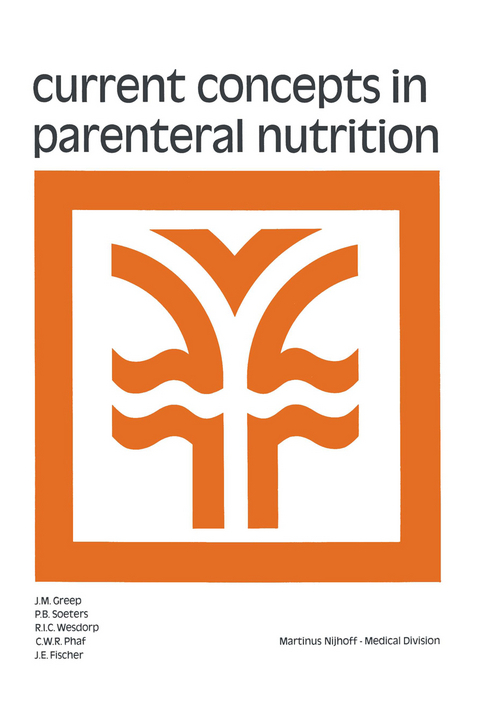
Current Concepts in Parenteral Nutrition
Springer (Verlag)
978-94-010-1072-6 (ISBN)
J. E. Fischer, M.D. Professor Greep, ladies and gentlemen. It is a great pleasure for me and the participants to be present at this International Meeting of Parenteral Nutri tion. This meeting would not have been possible five years ago. At that time we were still arguing about central vs. peripheral routes, efficacy of the tech nique, and still getting accustomed to our ability to support patients nutri tionally. Within the last five years these discussions, which seem almost futile in retrospect, have been put aside. Both techniques, we know how, work quite well and have their own indications. Having become comfortable with the technique, it is now time to enter the second phase of parenteral nutrition, and that is the differentiation of the technique for the benefit of different patients. Over the next two days we will be discussing several problems which at the present time are central to the entire subject of parenteral nutrition. Is a fat calorie the same as a carbo hydrate calorie? What is the effect on protein metabolism of the fat calorie as opposed to the carbohydrate calorie? Are they equivalent? Are'there situations in which one is superior to the other? Perhaps we will find out tomorrow in the panel.
1 General principles of parenteral nutrition.- Applications and hazards of intravenous hyperalimentation.- Criteria for management of metabolic imbalance.- Hormonal control of substrate utilization in parenteral nutrition.- Requirements for protein and amino acids: applications to parenteral nutrition.- Parenteral nutrition of clinical patients with special regard to the biological value of amino-acid patterns.- The organization of a hyperalimentation unit.- Nursing in parenteral nutrition.- 2 Specific aspects of management.- Parenteral nutrition and gastro-intestinal fistulas.- Clinical and physiological consequences of total parenteral nutrition in the pediatric patient.- Parenteral nutrition in trauma.- Parenteral nutrition for patients with severe cardiac illness.- Parenteral nutrition in hepatic failure.- Complications of parenteral nutrition.- Parenteral nutrition in obstetrics and gynecology.- The nutritional care of the cancer patient.- The application of parenteral nutrition to renal failure patients.- Parenteral nutrition in burn patients.- 3 Supplement techniques to central parenteral nutrition.- The use of elemental diets.- Research on peripheral administration of parenteral nutrition in the post-operative period.- The rationale for using a fat emulsion (‘intralipid’) as part energy substrate during intravenous nutrition.- Lipid emulsions and technique of peripheral administration in parenteral nutrition.- Amino acid infusion after surgical injury.- Relationship of energy and protein input to nitrogen retention and substrate-hormone profile.- 4 Panel discussion.- Carbohydrate - versus fat - versus protein - calories.
| Zusatzinfo | 364 p. |
|---|---|
| Verlagsort | Dordrecht |
| Sprache | englisch |
| Maße | 152 x 229 mm |
| Themenwelt | Medizinische Fachgebiete ► Chirurgie ► Viszeralchirurgie |
| Medizinische Fachgebiete ► Innere Medizin ► Gastroenterologie | |
| ISBN-10 | 94-010-1072-2 / 9401010722 |
| ISBN-13 | 978-94-010-1072-6 / 9789401010726 |
| Zustand | Neuware |
| Haben Sie eine Frage zum Produkt? |
aus dem Bereich


